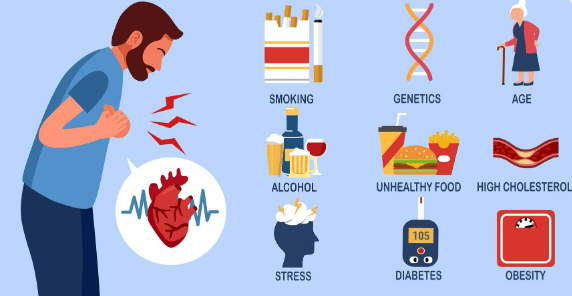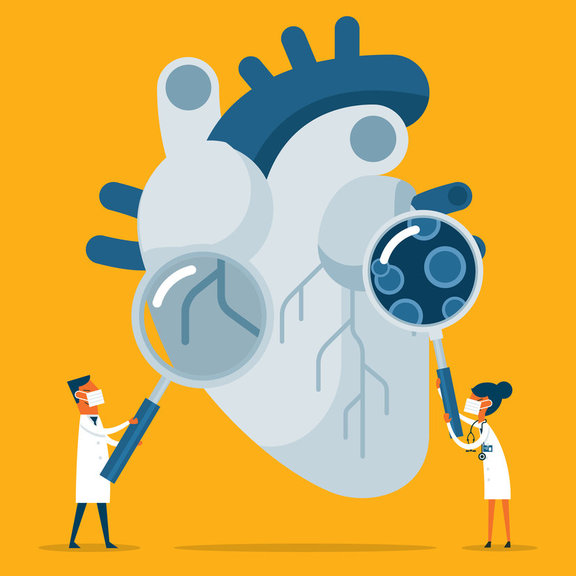Have you been diagnosed with heart failure and prescribed home oxygen therapy? When you have heart failure, it means that your heart isn’t pumping enough oxygen to the rest of your body. This can cause oxygen levels to dip, which can negatively impact the function of your body organs. Oxygen therapy helps to increase the amount of oxygen delivered to your body tissues to help reduce the strain on your heart.
What is heart failure?
Heart failure is a medical condition that occurs when the heart is unable to pump enough blood and transport oxygen throughout the body to satisfy its demands. It is a long-term ailment caused by the heart's inability to function properly, or has a structural defect. It can occur if the heart is overly weak or stiff and sometimes both.
It is estimated that 750,000 Canadians are currently living with heart failure.
Heart failure risk factors are illnesses or habits that can increase the chances of developing heart disease. Prevalent risk factors are:
-
Diabetes
-
High cholesterol levels in the blood
-
Usage of recreational drugs
-
High alcohol consumption
-
Chemotherapy or radiation treatment
-
Smoking
-
Poor diet and a lack of exercise leading to unhealthy weight gain.
-
Age and Gender – Men are more likely than women to have heart failure, but the gap narrows as they get older.
Common causes of heart failure are heart attacks (myocardial infarction) or coronary artery disease. High blood pressure (hypertension) can also lead to heart failure if left undiagnosed or untreated. Depending on your age and general health condition, it's critical to have your blood pressure tested at least once every two years.
Symptoms of heart failure
There are several signs of heart failure including:
-
Fatigue
-
Swelling in the legs and belly
-
Shortness of breath
-
Chest congestion
-
Dizziness and fainting
-
Nausea
-
Chronic coughing
-
Feeling bloated
-
Inability to sleep
-
Palpitations (racing heart)
One or more of these symptoms can occur in people with heart failure, and the majority of them can be alleviated with the right treatment. If you are experiencing these symptoms, speak to your physician immediately.
Feeling short of breath (or dyspnoea) is the most prevalent symptom of heart failure and has been considered an indicator of the disease. Breathlessness can happen when trying to accomplish too much in a day. For instance, exercising too much (e.g., walking, climbing a hill, fishing, gardening, and/or dancing), or attempting to lift heavy items. Patients can try to avoid strenuous activities by taking things slowly, or use supplemental oxygen when feeling out of breath.
When you're out of breath, it feels like... you’re walking up a steep hill... or you’re running up and down stairs. Even though I’m not doing any of these activities, that is how it feels, you're panting hard and gasping for oxygen.
How can oxygen therapy help with heart failure?
One of your heart's most critical functions is to transport oxygen in your blood throughout your body. Heart conditions can make it difficult for your heart to effectively pump blood to and from your lungs. This can lead to a reduction in the amount of oxygen reaching your bloodstream, and eventually your organs and tissues. If your body isn't getting enough oxygen, your doctor may recommend that you begin oxygen therapy.
The importance of oxygen in your health cannot be overstated. Your muscles and organs, such as your heart, brain, and kidneys, can become damaged as a result of oxygen deficiency. Oxygen therapy allows you to breathe in more oxygen to ensure that your body gets what it requires to function normally.
Based on your oxygen saturation levels, your healthcare practitioner may prescribe oxygen treatment to assist you with everyday tasks while also improving your overall quality of life.
Home oxygen treatment for heart failure
Oxygen therapy can be administered from the comfort of your own home. It can help ease symptoms such as shortness of breath. Treatment involves inhaling oxygen from a gas cylinder or an oxygen concentrator (machine that concentrates oxygen from the air around it) through a mask or nasal tube.
Home oxygen therapy increases the oxygen levels in your blood and can help you:
- Live longer
- Improve your breathing and feel less tired
- Increase your ability to move about and keep a social life
- Improve your sleep and quality of life
- Reduce hospitalizations
Many patients have an oxygen concentrator in their bedroom and/or living room, as well as a spare oxygen cylinder in their bedroom as backup. They may use the therapy in bed at night, and as required throughout the day.
Portable oxygen concentrators are similar to home oxygen concentrators but are smaller, lighter, and run on battery. They can help you stay active by taking walks and traveling while on oxygen therapy. Living with heart failure can be difficult, but there are resources to help you manage your heart failure.
If you want more information about home oxygen therapy and devices, our experienced clinicians would be happy to speak with you, please contact us.
References:
Healthtalk. (n.d.). Retrieved March 1, 2022, from https://healthtalk.org/
Moore, W. (n.d.). Oxygen therapy treatment for heart failure: Purpose, procedure, side-effects. WebMD. Retrieved March 1, 2022, from https://www.webmd.com/heart-disease/heart-failure/what-is-oxygen-therapy-for-heart-failure
Heart failure. Heart and Stroke Foundation of Canada. (n.d.). Retrieved March 1, 2022, from https://www.heartandstroke.ca/heart-disease/conditions/heart-failure






